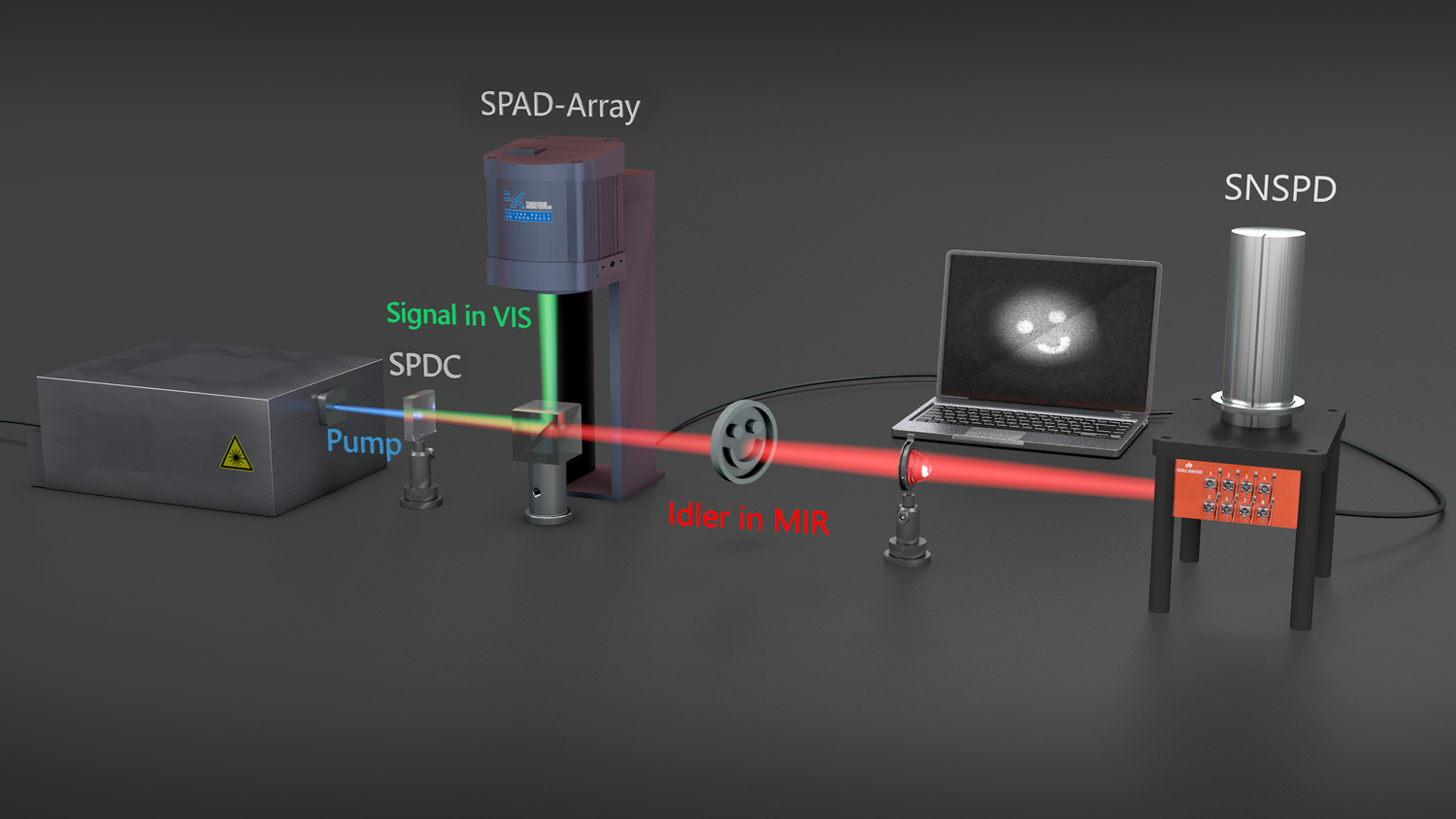“FastGhost” develops a new microscope for quantum imaging
A research project funded by the European Union with about 3 million Euro is dedicated to the development of a chemically selective microscope based on quantum technology (quantum ghost imaging). The “FastGhost” project started with a kickoff event on October 20, 2020.
Quantum imaging with non-classically correlated photon pairs has fundamental advantages over conventional imaging modalities based on classical light: This includes the possibility of achieving high image quality even with a very low number of photons. Furthermore, the sample interaction and the spatial detection on different wavelengths channels are relevant advantages of quantum imaging. This quantum technology enables particularly high-contrast and information-rich imaging of tissue with low radiation dose. Thus, it has a high potential for application in life sciences. So far, however, the results are only available theoretically and at the level of principle demonstrations.
The “FastGhost” project now aims to translate quantum ghost imaging from an experimental approach into usable technology. The aim is to develop and implement a microscope using the advantages of non-classical quantum states of light. This is intended to demonstrate quantum imaging in the mid-infrared range (“MIR”) with a wavelength of up to 7 μm, a spatial resolution of at least 5 μm, and at least 512 x 512 image pixels. It aims at taking no more than a second to take a single picture.
Such a microscope is a breakthrough for quantum imaging technology, but also for a variety of important applications. The novel quantum microscopy can thus contribute to fully exploiting the quantum advantages. However, various scientific and technological innovations are required for the implementation of the microscope – including the development of efficient single-photon detectors in the mid-infrared range and fast single-photon cameras for correlation measurements. The partners of the “FastGhost” project will research these goals by 2023.
„FastGhost“ partners
- Fraunhofer Institute for Applied Optics and Precision Engineering IOF, Jena / Germany
- Friedrich-Schiller-Universität Jena, Institute of Applied Physics, Jena / Germany
- Single Quantum BV, Delft / Netherlands
- Fondazione Bruno Kessler, Trento / Italy
- Kungliga Tekniska Hoegskolan, Stockholm / Sweden

Funded under H2020-EU.1.2.1. (grant agreement no. 899580) from October 1, 2020 to September 30, 2023.
